A Broadwell Retrospective Review in 2020: Is eDRAM Still Worth It?
by Dr. Ian Cutress on November 2, 2020 11:00 AM ESTGaming Tests: Final Fantasy XIV
Despite being one number less than Final Fantasy 15, because FF14 is a massively-multiplayer online title, there are always yearly update packages which give the opportunity for graphical updates too. In 2019, FFXIV launched its Shadowbringers expansion, and an official standalone benchmark was released at the same time for users to understand what level of performance they could expect. Much like the FF15 benchmark we’ve been using for a while, this test is a long 7-minute scene of simulated gameplay within the title. There are a number of interesting graphical features, and it certainly looks more like a 2019 title than a 2010 release, which is when FF14 first came out.
With this being a standalone benchmark, we do not have to worry about updates, and the idea for these sort of tests for end-users is to keep the code base consistent. For our testing suite, we are using the following settings:
- 768p Minimum, 1440p Minimum, 4K Minimum, 1080p Maximum
As with the other benchmarks, we do as many runs until 10 minutes per resolution/setting combination has passed, and then take averages. Realistically, because of the length of this test, this equates to two runs per setting.
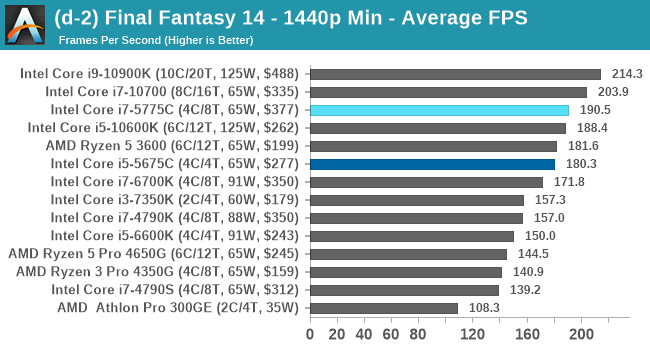
| AnandTech | Low Res Low Qual |
Medium Res Low Qual |
High Res Low Qual |
Medium Res Max Qual |
| Average FPS | 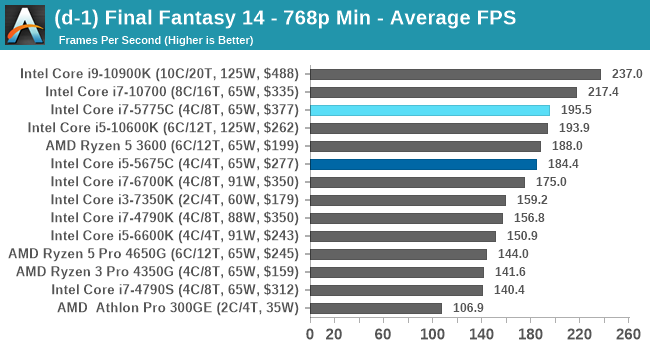 |
 |
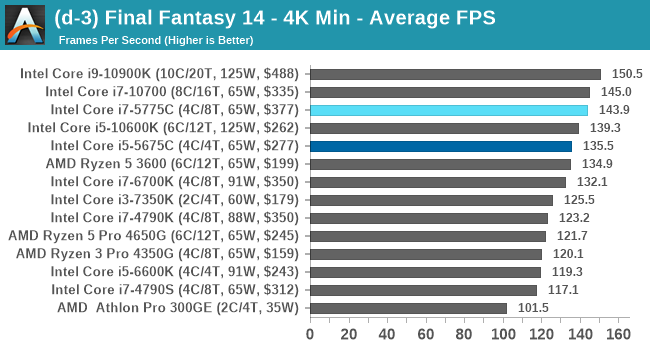 |
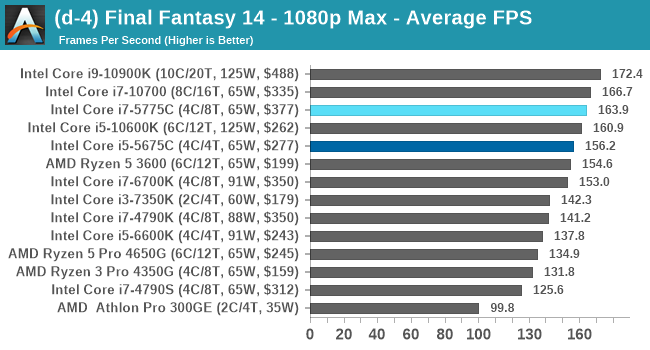 |
Final Fantasy 14 seems to like good memory latency as well, with the Core i7 and Core i5 Broadwell parts scoring high here. Through all the settings runs, the CPU stack remains consistent in the differences.
For our Integrated Tests, we run the first and last combination of settings.
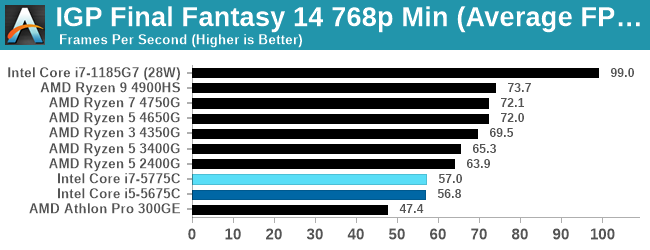
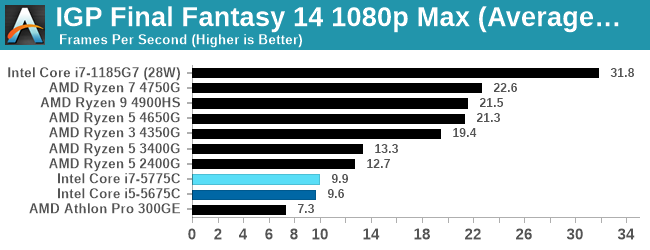
768p Minimum seems playable enough. The Broadwell parts are just nipping on the heels of AMD's Renoir.
All of our benchmark results can also be found in our benchmark engine, Bench.


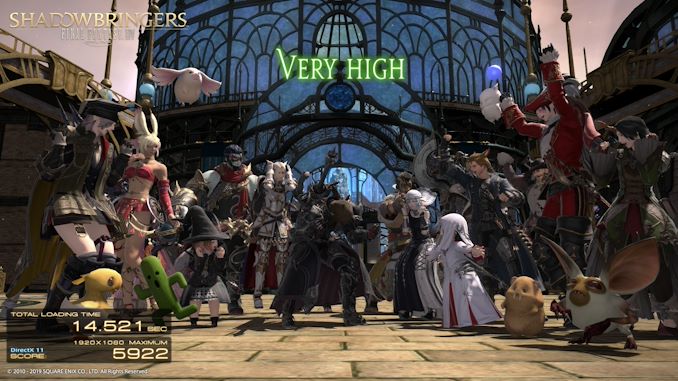








120 Comments
View All Comments
realbabilu - Monday, November 2, 2020 - link
That Larger cache maybe need specified optimized BLAS.Kurosaki - Monday, November 2, 2020 - link
Did you mean BIAS?ballsystemlord - Tuesday, November 3, 2020 - link
BLAS == Basic Linear Algebra System.Kamen Rider Blade - Monday, November 2, 2020 - link
I think there is merit to having Off-Die L4 cache.Imagine the low latency and high bandwidth you can get with shoving some stacks of HBM2 or DDR-5, whichever is more affordable and can better use the bandwidth over whatever link you're providing.
nandnandnand - Monday, November 2, 2020 - link
I'm assuming that Zen 4 will add at least 2-4 GB of L4 cache stacked on the I/O die.ichaya - Monday, November 2, 2020 - link
Waiting for this to happen... have been since TR1.nandnandnand - Monday, November 2, 2020 - link
Throw in an RDNA 3 chiplet (in Ryzen 6950X/6900X/whatever) for iGPU and machine learning, and things will get really interesting.ichaya - Monday, November 2, 2020 - link
Yep.dotjaz - Saturday, November 7, 2020 - link
That's definitely not happening. You are delusional if you think RDNA3 will appear as iGPU first.At best we can hope the next I/O die to intergrate full VCN/DCN with a few RDNA2 CUs.
dotjaz - Saturday, November 7, 2020 - link
Also doubly delusional if think think RDNA3 is any good for ML. CDNA2 is designed for that.Adding powerful iGPU to Ryzen 9 servers literally no purpose. Nobody will be satisfied with that tiny performance. Guaranteed recipe for instant failure.
The only iGPU that would make sense is a mini iGPU in I/O die for desktop/video decoding OR iGPU coupled with low end CPU for an complete entry level gaming SOC aka APU. Chiplet design almost makes no sense for APU as long as GloFo is in play.